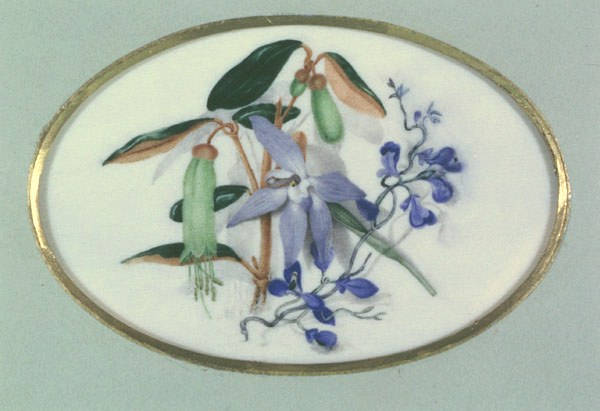 |
 |
|
Flora
The flora of Tasmania originated in the evolutionary radiation of plant life during the Cretaceous. Tasmanian vegetation, with its 1650 native phanerogamic plants and thousands of cryptogamic plants, ranges from alpine moorlands and heaths to temperate rainforest, eucalypt forests and coastal heathlands. The discovery and scientific exploration of this flora and vegetation mirrors some of the great movements in science and has involved many scientists and naturalists. These include some of the most eminent names in botany such as Robert Brown, Allan Cunningham, Joseph Dalton Hooker and Jacques Julien de Labillardière. Aboriginal people accumulated an understanding of the utility of Tasmanian flora during at least a period of 40,000 years prior to the arrival of Europeans. This compendium of knowledge was unfortunately incompletely preserved before the disintegration of tribal culture. The earliest collections of Tasmanian plants were made by naturalists, gardeners and surgeons attached to voyages of exploration in the late eighteenth and early nineteenth centuries, for example Labillardière and Deschamps on d'Entrecasteaux's expedition, Leschenault, Michaud and Delisse with Baudin, and David Nelson with Cook. These collections were taken to Europe, contributed to the expansion of the world's catalogue of living things and helped in the establishment of the Linnaean nomenclatural system. Two significant early collectors were attached to expeditions raised in New South Wales. Robert Brown who visited the Kent Group, King Island, the Tamar estuary and the environs of Hobart, published an important overview of Tasmanian plants. Alan Cunningham visited with King in 1819–20, during a hydrographical survey of the Australian coast. He made valuable observations on the flora of Mount Wellington (then Table Mountain) and Macquarie Harbour, particularly Huon pine. In the early nineteenth century a small group of educated men in the colony began correspondence with the centre of botanical study in the English-speaking world – the Royal Botanic Gardens, Kew. Pre-eminent among these, Ronald Campbell Gunn, and to a lesser extent Robert Lawrence, collected numerous plants for dispatch to London. These contributed to building the picture of the systematics and affinities of Tasmania's flora that were described in Hooker's seminal essay (1855). From this period to the rise of public science following the Second World War, there were perhaps a hundred years populated by only a small number of enthusiastic naturalists and part-time scientists. With the exception of some outstanding visitors (Charles Darwin in 1836, and JD Hooker in 1849), they were mainly local men who laboured to produce floras of Tasmania, collected plants for study by botanists in Europe and the larger centres of Australia, or carried out their own investigations, the results of which may have found their way into publication. The age of discovery and description of new plants was fading in the early twentieth century. Following the Second World War, Dr Winifred Curtis began preparing a new Tasmanian flora. This multi-volume publication laid the basis for much modern work. The scientific focus on Tasmanian plants changed in the 1950s. Pioneering work on eucalypt genetics by Professors Barber and Jackson spawned a strong research focus that continues through the work of Tasmanian scientists in the University of Tasmania Department of Plant Science and the CSIRO. In the early 1970s there was a rapid increase in the work carried out on the ecology of Tasmanian vegetation, with significant work produced by the University of Tasmania School of Geography and Environmental Studies and government scientists. The volume of work published on Tasmanian botany in the last thirty years well exceeds all that produced in the 170 years previously, but those years provided a secure foundation on which to build. Further reading: R Brown, Prodromus florae Novae-Hollandiae et insulae Van-Diemen 1, London, 1810; T Burns & J Skemp, Van Diemen's Land correspondents, Launceston, 1961; J Hooker, The botany of the Antarctic voyage of H.M. discovery ships Erebus and Terror... III, Flora of Tasmaniae, London, 1860. Stephen Harris |
Copyright 2006, Centre for Tasmanian Historical Studies |
